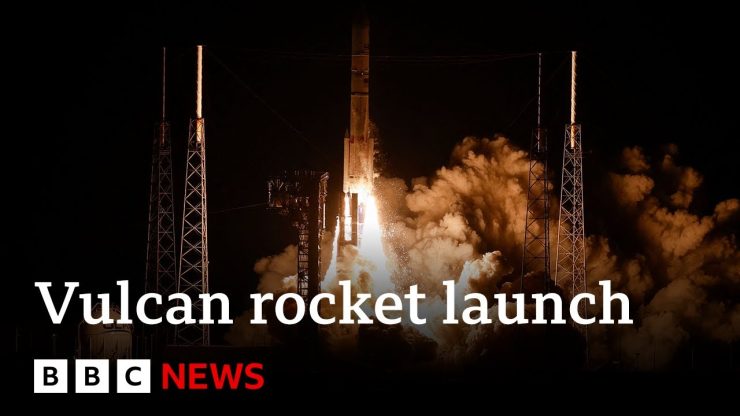The unmanned Vulcan rocket has launched from Florida on its maiden voyage to the Moon.
- NOW – Vulcan rocket with lunar lander lifts off for the first U.S. landing on the moon since the final Apollo mission 1972.
- Two BE-4 methane engines from Blue Origin and two GEM 63XL solid rocket boosters from Northrop Grumman power the first United Launch Alliance Vulcan rocket toward space
- With the success of
- @ulalaunch‘s #VulcanRocket, our country has more tools to explore space. Spaceflight is a daring adventure, and
- @astrobotic is making progress for CLPS deliveries and Artemis.
- @NASA will continue to expand our reach in the cosmos with our commercial partners. – Bill Nelson – NASA
- NASA Science Heads to Moon on First US Private Robotic Artemis Flight –
- Carrying NASA scientific instruments as part of its Commercial Lunar Payload Services initiative, Astrobotic’s Peregrine lander launched on United Launch Alliance’s (ULA) Vulcan rocket at 2:18 a.m. EST from Launch Complex 41 at Cape Canaveral Space Force Station in Florida. Peregrine has about a 46-day journey to reach the lunar surface.
- Once on the Moon, NASA instruments will study the lunar exosphere, thermal properties of the lunar regolith, hydrogen abundances in the soil at the landing site, and conduct radiation environment monitoring. The five NASA science and research payloads aboard the lander will help the agency better understand planetary processes and evolution, search for evidence of water and other resources, and support long-term, sustainable human exploration.
- “The first CLPS launch has sent payloads on their way to the Moon – a giant leap for humanity as we prepare to return to the lunar surface for the first time in over half a century,” said NASA Administrator Bill Nelson. “These high-risk missions will not only conduct new science at the Moon, but they are supporting a growing commercial space economy while showing the strength of American technology and innovation. We have so much science to learn through CLPS missions that will help us better understand the evolution of our solar system and shape the future of human exploration for the Artemis Generation.” NASA









This is good and all, but how many billions did it take to make this happen? Compared to how cheaply SpaceX would have delivered this load to the moon…..